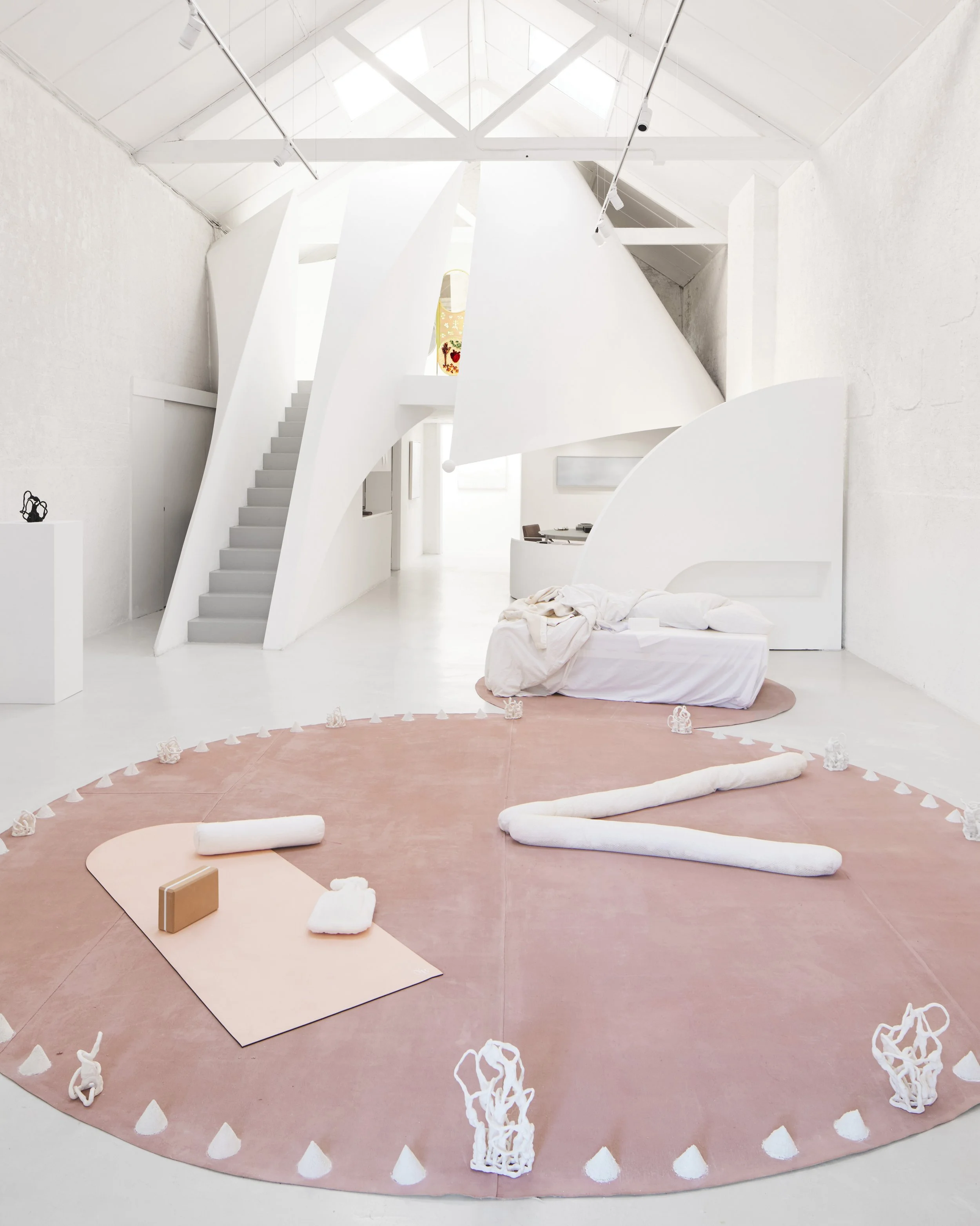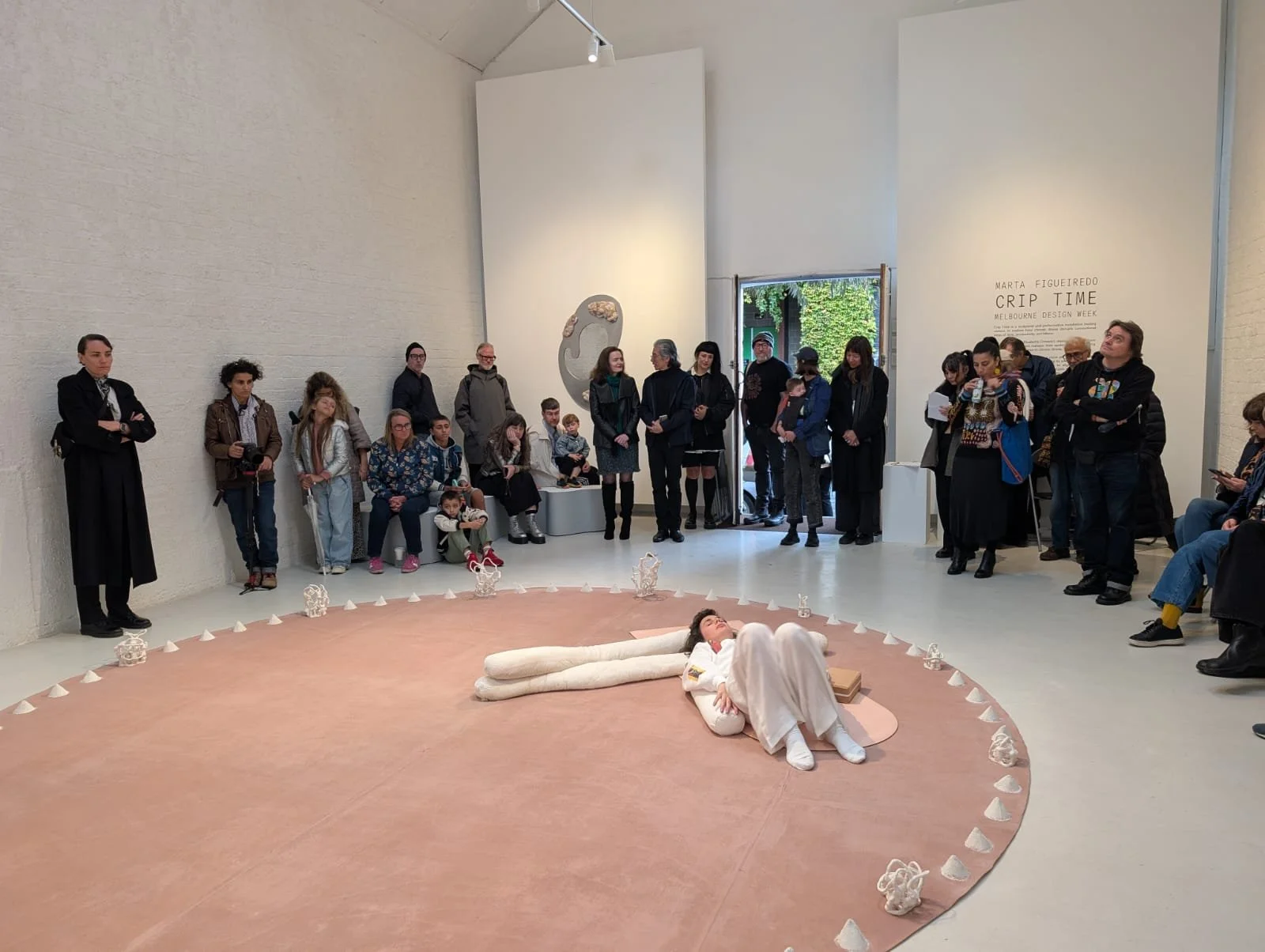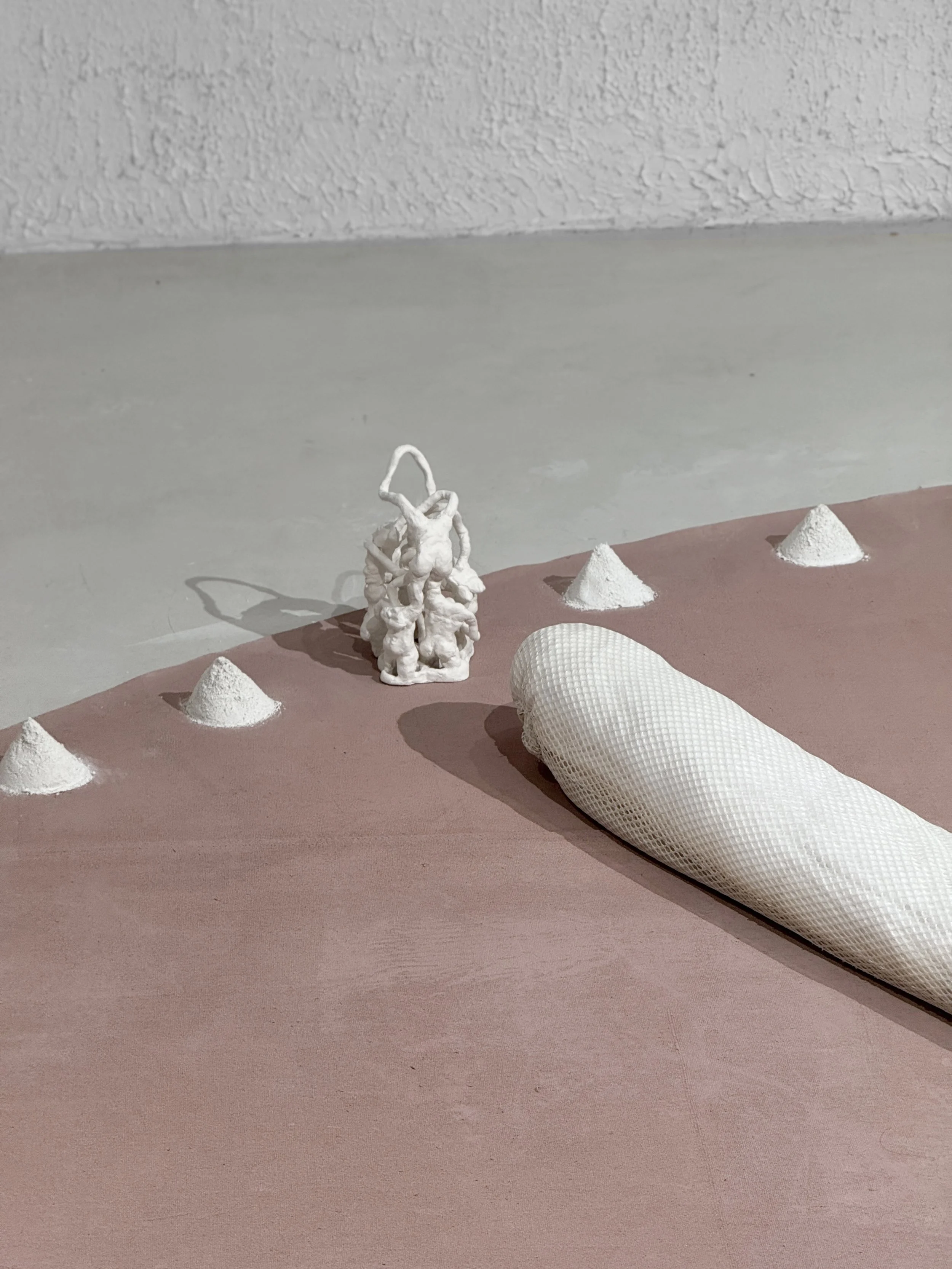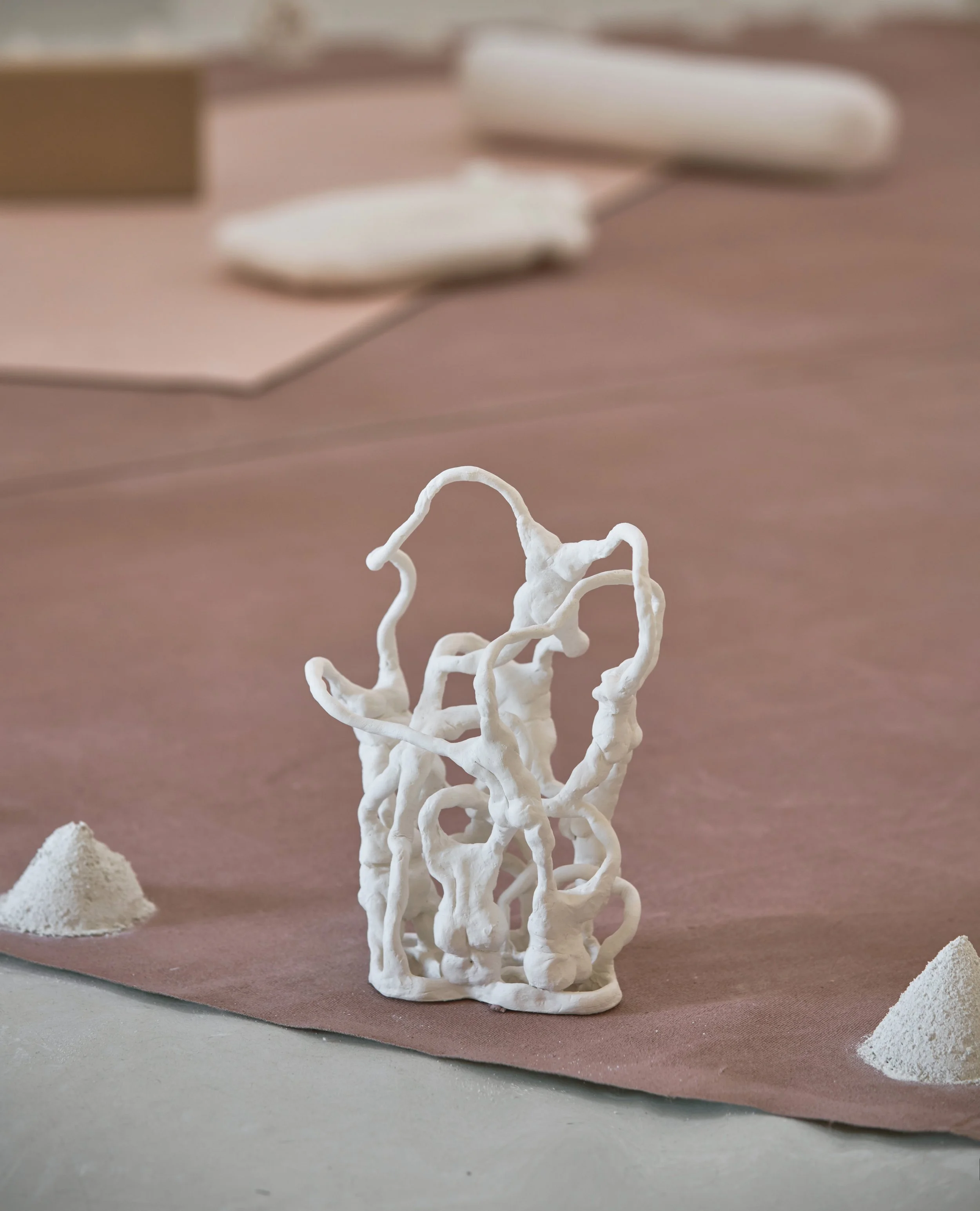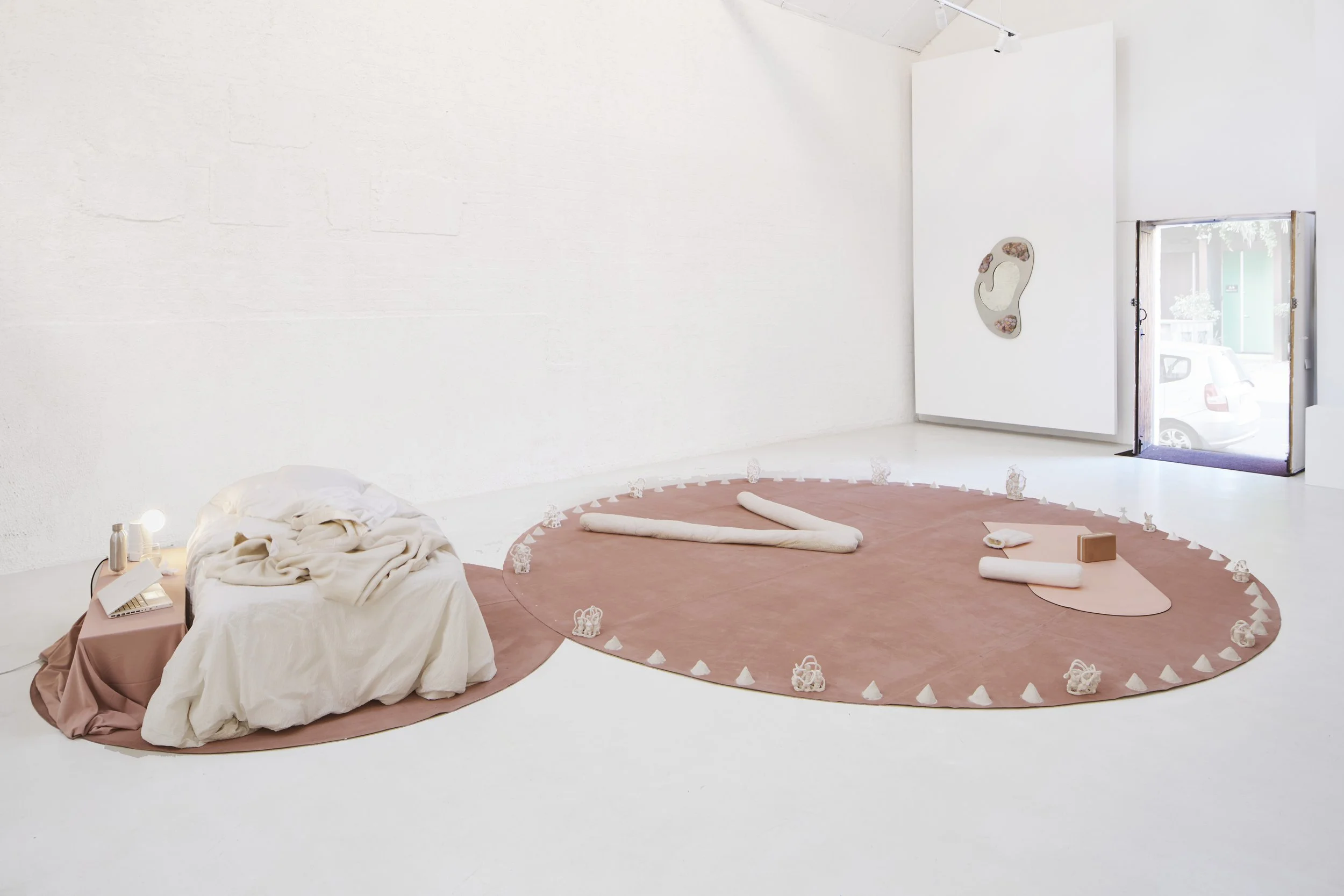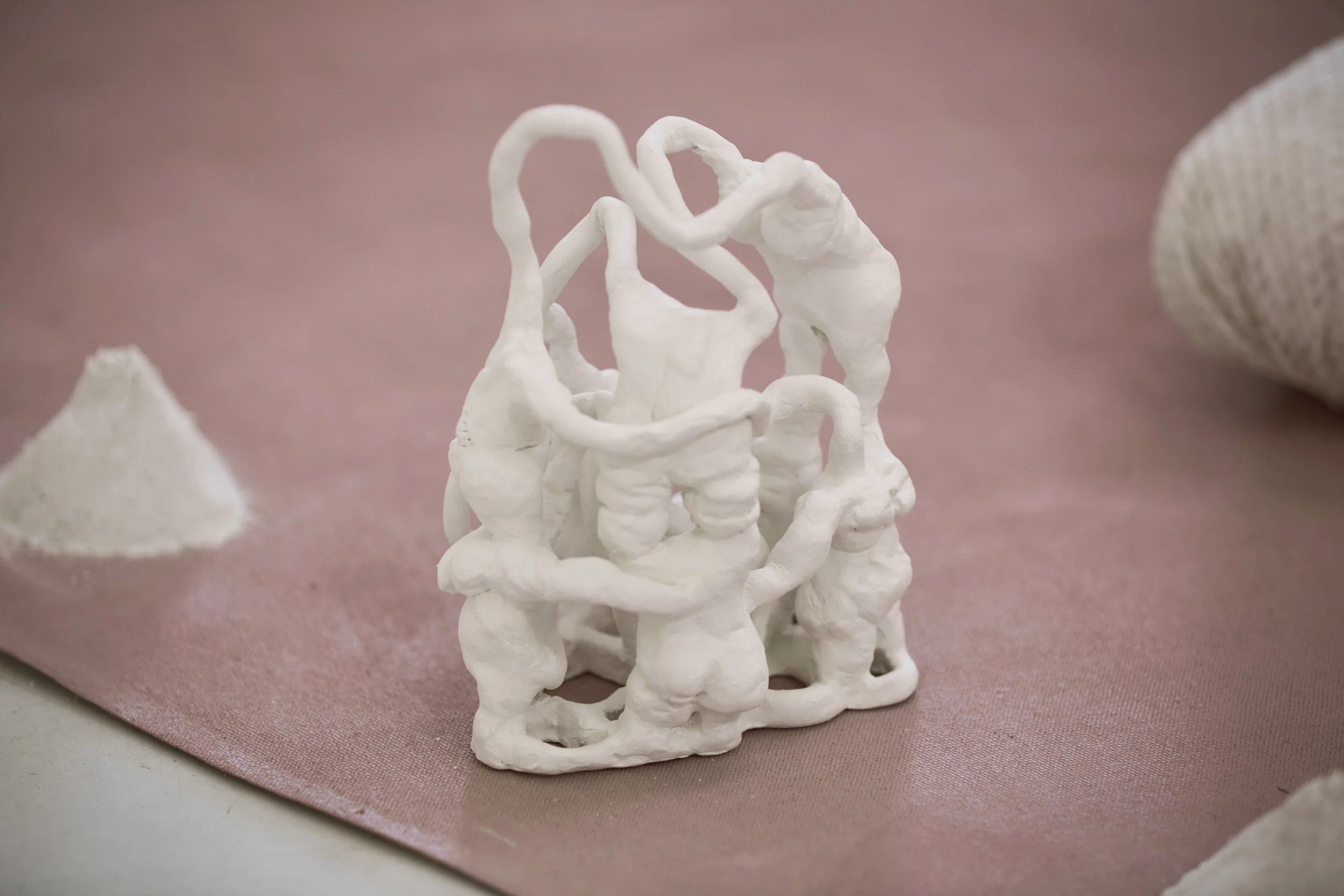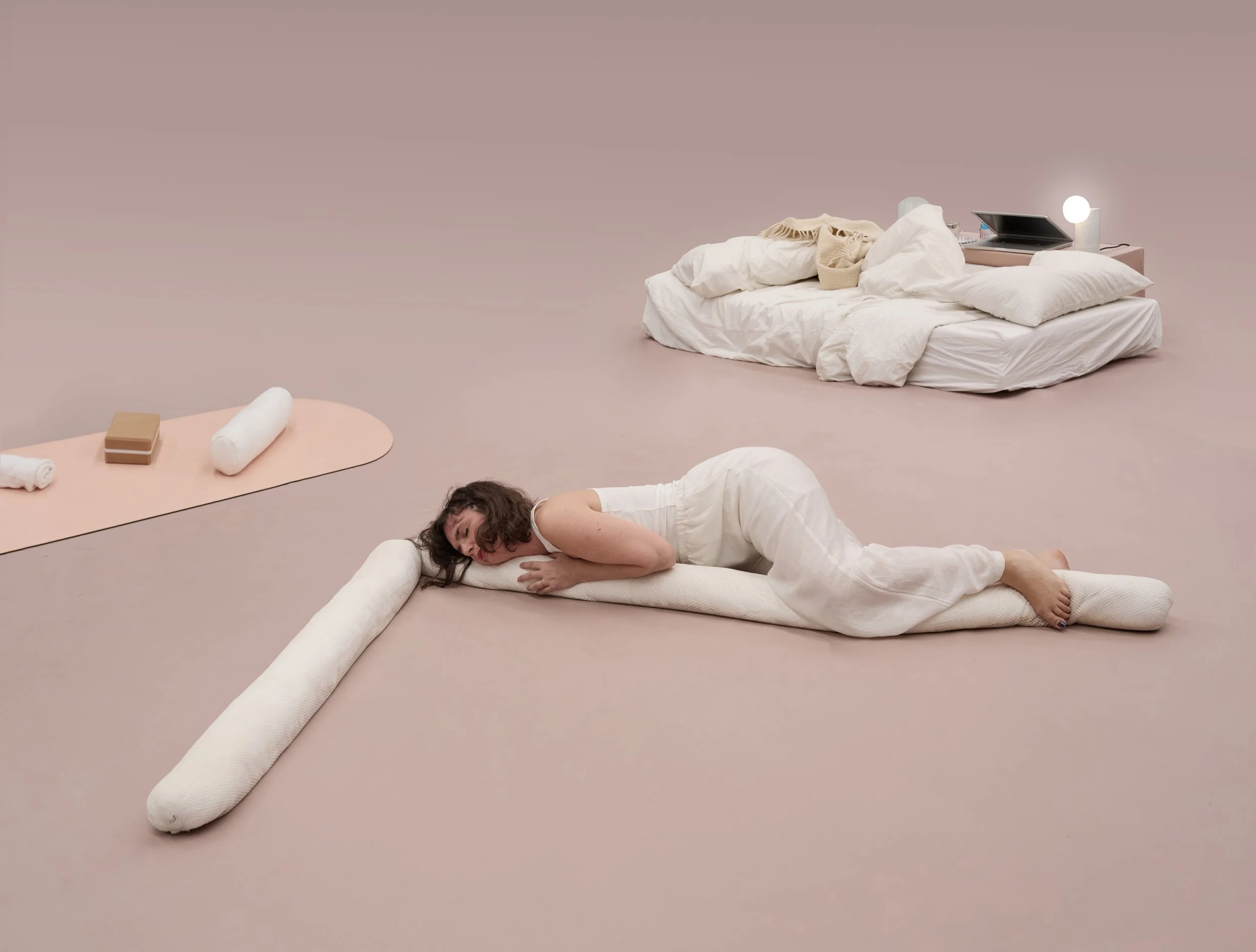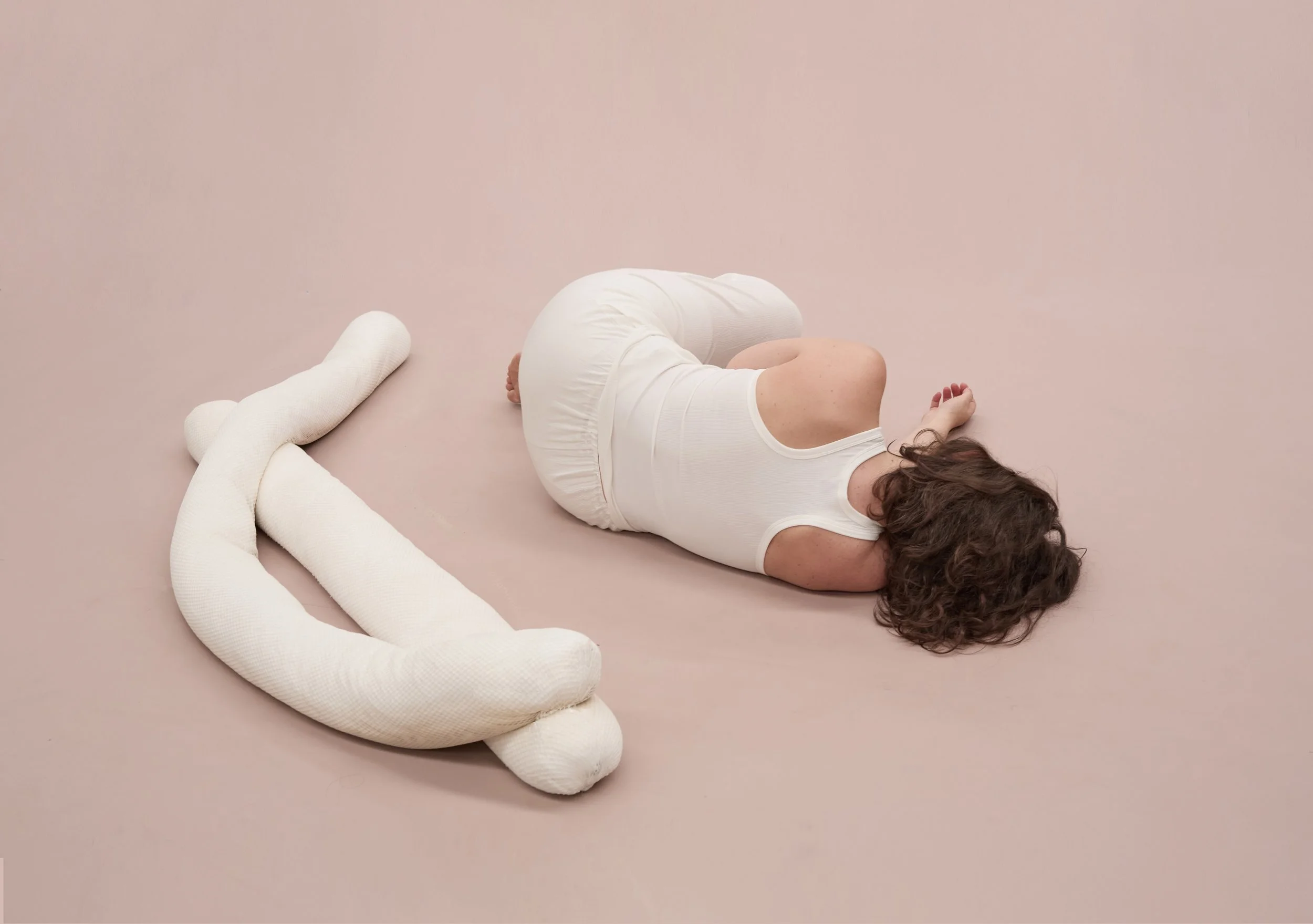CRIP TIME PERFORMANCE. 2025
MAGMA Galleries, Melbourne Design Week 2025
15–25 May 2025, 11am–5pm 60 minutes daily
Crip Time is a live performance and sculptural installation that explores how chronic illness reshapes our relationship to time, labour, and the body, particularly in the context of working from home. Presented daily over ten days at MAGMA Galleries during Melbourne Design Week 2025, the work unfolded through a series of one-hour performances, accompanied by a responsive live sound composition by Jonathon Griggs.
The performance was informed by research conducted by human geographer Dr Elisabetta Crovara, whose interviews with women living with chronic illness and working remotely from home revealed a set of adaptive temporal strategies – pacing, pushing through, anticipating – used to navigate daily work while managing energy, pain, and care. These insights deeply resonated with my own lived experience, and became the conceptual foundation for the work.
I designed the installation to reflect the spatial and emotional choreography of working from home while unwell. The gallery was mapped like a domestic space – a bed, a mat, care objects. At its centre, a large circular field became both a clock and a site of labour. Small sand piles marked the minutes, while soft sculptural forms – the bodies of time – marked the hours, referencing the accumulation, weight, and non-linearity of time lived through illness.
Each day, I stepped into the circle and pushed oversized clock hands, sand-filled, soft, and heavy, minute by minute. Between movements, I paused to stretch, massage sore muscles, apply heat packs, and manage pain. This double labour (keeping time and caring for my body) was the performance. At times, I collapsed into the bed placed within a smaller adjoining circle (what I call the Crip Time pocket), a space for refusal, for stillness. When I rested, the clock stopped. Time stopped. But the witnessing did not.
The rhythm of each performance was intuitive, shaped by fluctuating energy and the body’s changing capacity. Across the week, I moved through sluggish beginnings, moments of steadiness, urgency, anticipation of flare-ups, collapse, and eventual return. Time bent with me, sometimes stretching, sometimes stalling. Even the clock hands began to warp and drag, resisting forward motion.
Jonathon Griggs’s live sound composition responded to every shift, ambient, textural, and closely attuned to breath, pause, and gesture. The sound held the space with softness and tension, deepening the emotional field of the work.
Audiences returned daily. Some sat quietly through the full hour. Others shared deeply personal reflections.
Acknowledgments:
Presented as part of Melbourne Design Week 2025
Live sound by Jonathan Griggs (@softedgesmusic)
Research collaboration with Elisabetta Crovara
_______________________________________________________________________________________________________________________________
Press
“A woman moves the hands of a clock by force. Every minute takes effort… Artist Marta Figueiredo reimagines time through the lens of chronic illness, and asks us to feel what productivity really costs.”
- The Saturday Paper, Melbourne Design Week 2025
_______________________________________________________________________________________________________________________________
60-minute performance inhabiting altered time
MATERIALS
Clock Face: Cotton canvas floor, a stage for embodied rhythms, layered with polymer paint, sand, and cement. Twelve hand-formed air-dry clay sculptures quietly mark the passing hours, fragile records of endurance, interruption, and adaptation. Clock hands in fabric and sand, and a computer, symbols of labour’s fractured rhythms. A yoga mat and block, for pacing and pause.
The Crip Time Pocket: Bed, a site of rest, resistance, and negotiation. Pillows, blanket, and sheets, soft architecture of the body. Hot water bottle, tissues, medication, and a glass of water, quiet urgencies and rituals of care. A single lamp.
